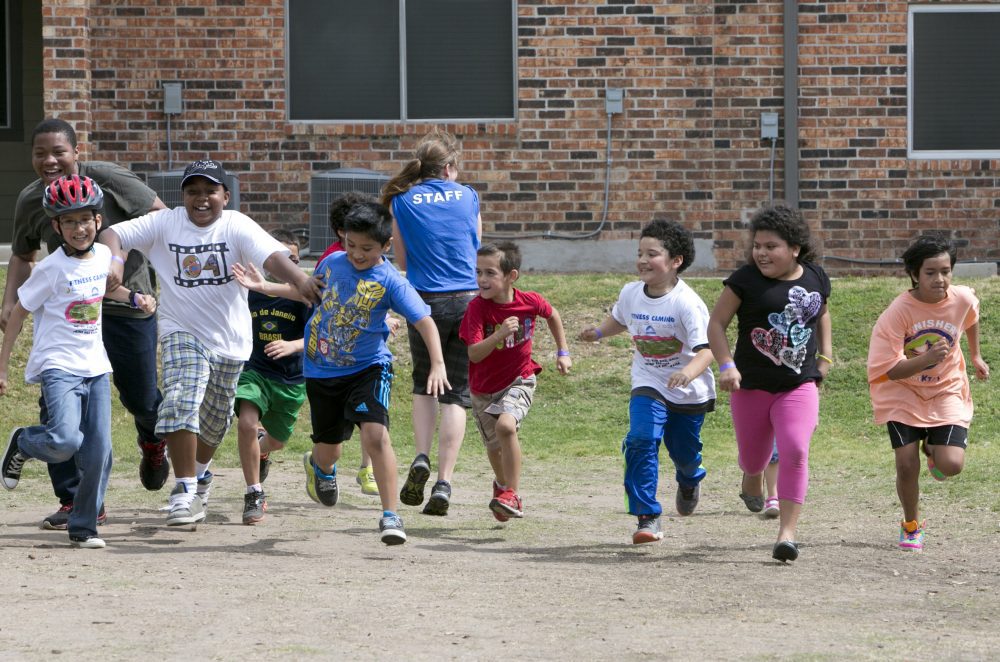
Children learn healthy behaviors at Foundation Communities’ free after-school program. Photo courtesy of Foundation Communities
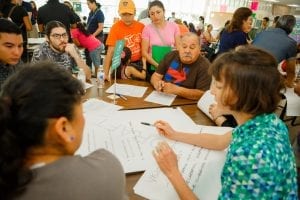
Residents come together to identify challenges in their community and brainstorm sustainable solutions to help increase quality of life in Houston’s Northline neighborhood. Photo courtesy of Carlos Gonzalez, Epic Shots Photography
The grassroots-housing world hasn’t always been a place known for whiz-bang presentations and comprehensive data.
Only nine years ago, in 2009, the U.S. Department of Housing and Urban Development made it mandatory for shelters and other agencies to use the Homelessness Management Information System to track homeless clients.
But now, housing administrators are often asked to partner with the health care sector, which is known for deep data and sophisticated financial analyses.
“It does feel a little like when an older classmate would ask me to dance: ‘Who? Oh, me? I’m happy to do that,’” says Joan Serviss, executive director of the Arizona Housing Coalition. Serviss finds the new interest flattering, but she isn’t sure how to measure up.
She recently added two new members to the coalition’s board, both of whom were from the health care sector. Over the past several years, it seems, that’s becoming almost an industry standard for community development corporations (CDCs) and grassroots housing organizations like hers.
Two years ago, in a survey of its members, the Massachusetts Association for Community Development Corporations found that there is “a growing movement toward health programming among CDCs” and that many CDCs were already doing health-related work. About one-third of responding CDCs had a board member from a health-related field.
Twice as many of the CDCs, roughly two-thirds, had partnered with health care providers such as clinics and hospitals. The survey also found that CDCs were also involved in a broader range of efforts that might fall under the umbrella of public health, a wide variety of activities like community gardens to basketball programs for youth, to meal delivery for seniors and food access for families.
In Arizona, Serviss wanted to know more about the intersection of health and housing, as she prepared to head up a new board, the result of a merger that combined two previous boards, one that dealt with homelessness and the other with affordable housing.
To help in that effort, one of her new board members set up a phone conversation between her and Barbara DiPietro, who directs policy and advocacy for the National Health Care for the Homeless Council.
“I think the biggest takeaway from our conversation was that both the housing and health care sectors are close to making this marriage work, but we just need to speak the same language,” Serviss says.
Of course, health care records are guarded by HIPAA laws and service providers for the homeless protect the client records entered into the Homeless Management Information Service, or HMIS. But Serviss isn’t sure it’s fair to point to the same old suspects.
Serviss finds money-related areas to be more challenging. For instance, for Permanent Supportive Housing clients, she always hears the same advice: “Bill Medicaid.” In some places, Medicaid does pay for the services that a formerly homeless person receives once they’re housed.
The process is not as simple as it sounds, Serviss says. “Anything around funding is complex.” But overall, it’s not so much about translating specific terms or even integrating funding streams, she says. Instead, it’s about breaking away from the longtime assumption that housing and health care issues should be dealt with in different conversations.
Other housing and health providers are similarly in need of guidance about how these new partnerships should proceed. Or so the Urban Institute found in its report Emerging Strategies for Integrating Health and Housing, which examined the increasing number of interventions that integrate health services and affordable housing.
“Despite the growing interest in collaboration, there has been little evidence to inform how to build and sustain meaningful cross-sector partnerships,” the authors wrote.
The Urban Institute researchers found that, historically, motivations to pair health and housing were spurred by a few specific missions and events, including the landmark U.S. Supreme Court’s Olmstead decision in 1999, which pushed providers to focus on the intersection of health and housing as it related to the housing of disabled people who were trying to live on their own in non-institutional settings.
More recently, the Affordable Care Act’s requirement has again highlighted the intersection. Beyond its coverage of many low-income adults who may also experience housing instability, ACA requires that nonprofit hospitals include social needs when creating community needs assessments. In conjunction, the Internal Revenue Service included some housing investments in guidance issued for nonprofit hospitals that are trying to fulfill their “community benefits” requirements. As a result, hospitals are now able to fulfill their community benefits requirements by investing in lead abatement, neighborhood revitalization, senior housing, parks and playgrounds that improve physical activity, and post-discharge housing for vulnerable people.
Today, the result is a rich set of partnerships, spurred and encouraged at both the board and staff level, in housing agencies across the nation.
Trying to Elevate the Connection
People who work in nursing have always felt the need to broaden partnerships and, in recent years, there’s an increasing interest in housing agencies, says Sofia Aragon, the executive director of the Washington Center for Nursing.
The Urban Institute study recognized the same trend, which it characterized as “an awakening within the health care sector that housing status is a key indicator of health.”
So, two years ago, Aragon was pleased to become part of the board for the Washington Low Income Housing Alliance, a statewide nonprofit. “I’m just happy that they were welcoming to me, because I had a lot to learn about their work,” she says.
Recently, as part of a Washington state grant from the federal Center for Medicare and Medicaid Innovation, Aragon was asked to serve on a committee that helps get homeless people into housing. That work involves the alliance. “It’s a work in progress,” says Aragon, who is figuring out how best to “elevate the connection” between her work with the alliance and her work on the grant.
Though collaborations between the two sectors are still “new-ish,” she says, most nurses begin dealing with housing-related issues as soon as they get their degrees.
Aragon started her career at Providence Health & Services, now part of Swedish Medical Center, where the mission was to serve the community. In last year’s report, Urban Institute researchers found that the earliest health care leaders interested in housing needs came from mission-driven community health systems, which were focused on finding answers to patients’ ailments in a way that transcended organizational boundaries.
“In a community setting like that, if you want your care to work, you need to consider what else is going on in patients’ lives,” she says. “Did they have transportation? Did they have housing?”
But once she knew her patients’ situations, she often had to go the extra step to seek out affordable-housing and social-services providers because connections between the two worlds were often spotty and the now-prevalent concept of housing chronically homeless people with medical supports hadn’t yet been developed.
Aragon’s devotion to these connections helps to inform her work on the alliance’s board, she says. She and her colleagues are now working to develop an interviewing tool for nurses to use, to screen patients for so-called social determinants that needed to be addressed. Nurses in the Seattle area are already familiar with the short video and handout that Aragon and her colleagues use to teach others about social determinants.
The two-page handout, which Aragon helped write, outlines the basics of the concept. A big blocky headline reads: “Why is Mrs. Smith in the hospital? She has chronic bronchitis.”
The text takes it several steps further:
But how did she get chronic bronchitis? Her cough persisted for a year and she didn’t seek treatment.
But why didn’t she seek treatment? She is homeless and doesn’t trust providers because of how she has been treated in the past.
But why is she homeless? Because she and her husband became unemployed a while ago. They couldn’t keep up with their bills and lost their home.
But why are they unemployed? Because neither of them has much education and they couldn’t find jobs.
But why?
The handout encourages each nurse to “Look beyond your patient. … Are there agencies working to tackle broad social issues? Do they need board members or committee members? Lend your expertise!”
Because of her work on the alliance board, Aragon feels like she is always on the lookout for ways to match her health care experience with the board’s work. “I try to find opportunities,” she says.
Supportive Partners
North of St. Louis, where Angela Pinex heads up the Spanish Lake Community Development Corporation, Christian Hospital is the natural partner for anything the CDC does to improve the neighborhood. “If there’s a health component, Christian will support us or be a co-applicant on the grant,” she says.
So it makes perfect sense that the board includes two members of the hospital staff.
Christian Hospital also helps to stabilize Spanish Lake housing by providing assistance to employees who want to buy a house near the hospital and live closer to work. It also provides the CDC with office and meeting space within the hospital campus.
In turn, the Spanish Lake CDC and its partners work with the hospital if there’s a patient whose condition may have a housing component. The hospital’s Emergency Medical Technicians make home visits first, then ask for help to remedy each situation.
“So if someone is always having asthma attacks and they think that’s because of conditions in her home, they’ll work with other organizations to make repairs,” Pinex said. “Or if a senior is always falling, they’ll check to see if there are loose tiles or steep stairs and then work with those organizations to fix that.”
A few years ago, researchers from Washington and St. Louis universities outlined what is known as “the Delmar Divide” in a long report that highlights the inequities that divide St. Louis. The disparities are evident to anyone who lives along Delmar Boulevard, which runs east and west and is seen as a dividing line for the city.
As Pinex drives along Delmar, she sees how the neighborhoods south of Delmar are affluent and white, while the neighborhoods north of Delmar, like Spanish Lake, are Black and poor. Tidy lawns and large homes sit on one side of her while rows of substandard houses sit on the other side.
The only hope to revitalize that degree of dilapidation comes when strong anchor institutions like Christian Hospital focus on common goals with housing agencies like hers, Pinex said.
Integrating Health
Five years ago, when the board of Foundation Communities in Austin, Texas, hired Andrea Albalawi as director of health initiatives, few other nonprofit developers had adopted that focus. “At that point, health was not on the radar of the other housing organizations that I saw,” she says.
But now, it’s happening everywhere she turns. “There’s an explosion in health.”
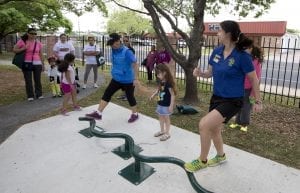
Residents enjoy the Fitness Camino exercise equipment at Foundation Communities’ Sierra Vista and Sierra Ridge communities. Foundation Communities has 22 communities in Austin and North Texas that provide a variety of offerings, including exercise classes, adult education, food pantries, and health clinics. Photo courtesy of Foundation Communities
Though the Foundation Communities board only includes one person from the health sector, the remainder of the board has also been adamant about integrating health and housing as the “third pillar” of its work, along with education and financial stability. And while many housing and health practitioners now throw around the phrase “housing is health care,” Foundation Communities takes it a step further, asserting that a roof over someone’s head improves health, but it’s not enough.
“Health is being integrated into where they live,” Albalawi says, noting that each of the developer’s 22 communities in Austin and North Texas provides a variety of offerings, including health clinics, exercise classes, childcare, adult education, tutoring, community gardens, food pantries with fresh produce, and classes for smoking cessation, food management, and control of chronic conditions such as diabetes, high blood pressure, heart disease, and obesity.
All of Foundation Communities’ properties are smoke-free. Before they build features to keep residents active, they sit down with residents to hear what they want. The result varies from community to community. Some want soccer fields or basketball and volleyball courts, others push for walking paths.
Every class offered in Foundation Communities’ developments is free not only to residents but to anyone in the surrounding neighborhood.
And while Albalawi tracks the number of people who attend classes in an attempt to build health metrics, she also sees mental-health benefits for many residents who create strong social networks through the classes they take together. For instance, there’s the single mother, a domestic-violence victim trying to rebuild her life, who lost more than 100 pounds and formed a sense of community with the women in her Zumba class. “She had cut all ties with her past for her own safety, but now she can be healthier for her daughter,” Albalawi said. “She now has huge support and it’s been life-changing.”
Seeing Health Differently
After the Versailles and Village de l’Est areas of eastern New Orleans were hard-hit by the flooding that followed Hurricane Katrina and the federal levee breaks in 2005, a home-grown CDC was integral to its rebuilding.
Daesy Behrhorst, an administrator at the school of public health at the Louisiana State University Health Sciences Center, is one of three people from health-related sectors who is on the board of the MQVN CDC in New Orleans, a CDC that is closely associated with the work of Mary Queen of Vietnam Church. The massive Catholic church has long been the center of the neighborhood’s large Vietnamese community and now, because of the growing Latino community, the church is holding Masses in Spanish.
Behrhorst has helped to guide the board’s work in placing housing in close proximity to its community clinic and to everyday activities such as community gardens.
In turn, her work is guided by the CDC’s overarching philosophy that health is more than an institution or a building, that it must include housing and green space and healthy activities. It’s been integrated like that from its start. But when Behrhorst attends conferences, health administrators often ask her how they can engage people from their own local housing agencies. “And people from housing ask the same thing: how do they connect to health?”
Behrhorst credits the residents who make up the majority of the CDC’s board for driving that integrated philosophy. “This is important to people who live in this community,” she said. “They see health differently. They don’t see health as doctor-hospital-institution. They see it as the environment in which they live. So it’s not just me pushing it.”
In 2011, in the wake of the BP oil spill, which devastated neighborhood residents who relied on fishing and shrimping to survive, the CDC helped to form a co-op called VEGGI to help residents sell organic garden produce and pond-grown fish, nurtured through aquaponics systems.
Today, the community offers housing, a community clinic, opportunities for physical activity, financial stability and healthy foods—all within a small, walkable area of the community. “In my mind, I have not seen any other project like this. In small towns, maybe, but not in urban areas like this,” says Behrhorst, who advised housing agencies to consider people from public health, not just medical health, when looking at board members. “It gives you a wider sense of what can happen in your community,” she said.
Better Able to Respond
When Hurricane Harvey hit Houston last year, Avenue CDC found itself able to react quickly because of the integrated community work it had already been doing, says Jennifer Wagley, the CDC’s deputy director. “We realized that, because of our comprehensive work, we were more able to do housing recovery,” she says. “We began mucking and gutting houses right away. But we opened a whole new recovery office and we had it staffed and open within a month.”
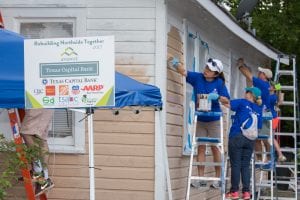
In Houston, Texas, Avenue CDC volunteers provide home repair assistance like scraping wood siding, painting, and landscaping to help residents maintain their homes. Photo courtesy of Janet Roe Photography
Because of the national model it had created, Avenue recently received a Build Health Challenge grant, a joint effort with Memorial Hermann Health System and the Houston Health Department. Avenue CDC has worked with neighbors on the Near Northside to create a safer environment by building sidewalks and reclaiming parks, finding ways for neighbors to become physically active and eat better. “Tying it together is what helped us win the award,” Wagley says.
Like the MQVN board, Avenue’s board has some people connected to health but is populated more by residents. “So health is just one lens that they look at the neighborhood,” Wagley says, describing how Avenue staff first identified a key health concern—a high population of stray animals—during a neighborhood quality-of-life survey nine years ago.
Many of those concerns now turned out to have health effects, Wagley says. “For instance, we now know that, because of those stray animals, people wouldn’t walk in their neighborhoods.” At the top of residents’ concerns was the neighborhoods’ lack of playgrounds and green space, which also had health-related effects, but was acted upon first because of neighbor-driven priorities. “So we didn’t say, ‘People have diabetes, we need more parks.’ We just heard about parks,” Wagley says.
Integrating health and housing is at the heart of Avenue’s mission of 26 years, which has been “building affordable housing and strengthening communities.” Wagley sees the new shared health-housing focus as a way to fulfill deep missions that are more able to transform lives. “We know that housing is the foundation of health,” she says. “But then you look around the neighborhood and see other things that need to be taken care of so that the people in the neighborhood can thrive.”
Correction: This article was updated to reflect a change. We incorrectly identified the Build Health Challenge grant as a federal grant. It actually came from a collaborative funder effort, including the Robert Wood Johnson, Kresge, deBeaumont, and Colorado Health foundations, the Advisory Board Company, and others.

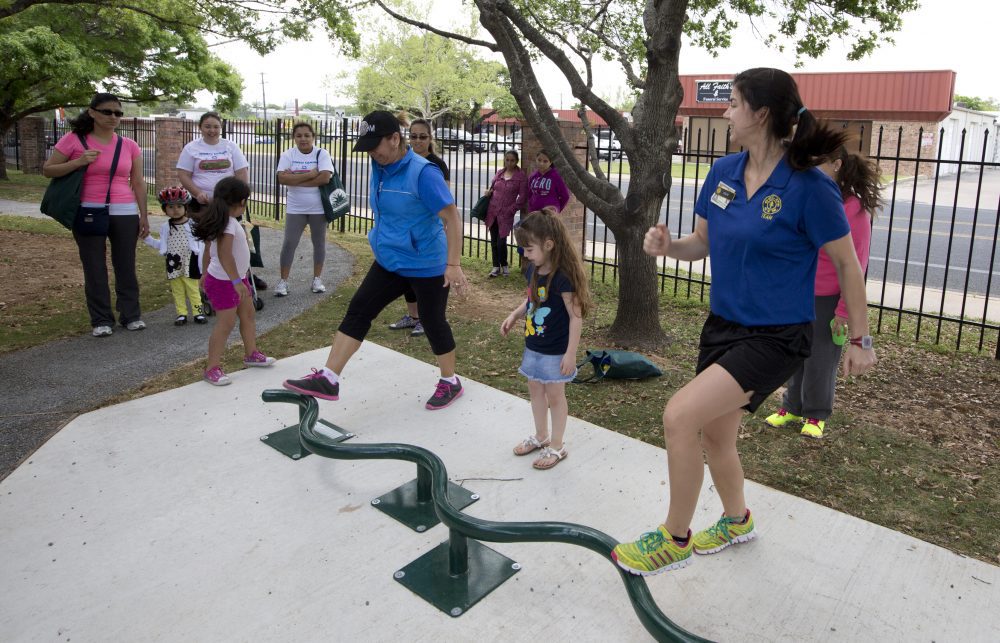
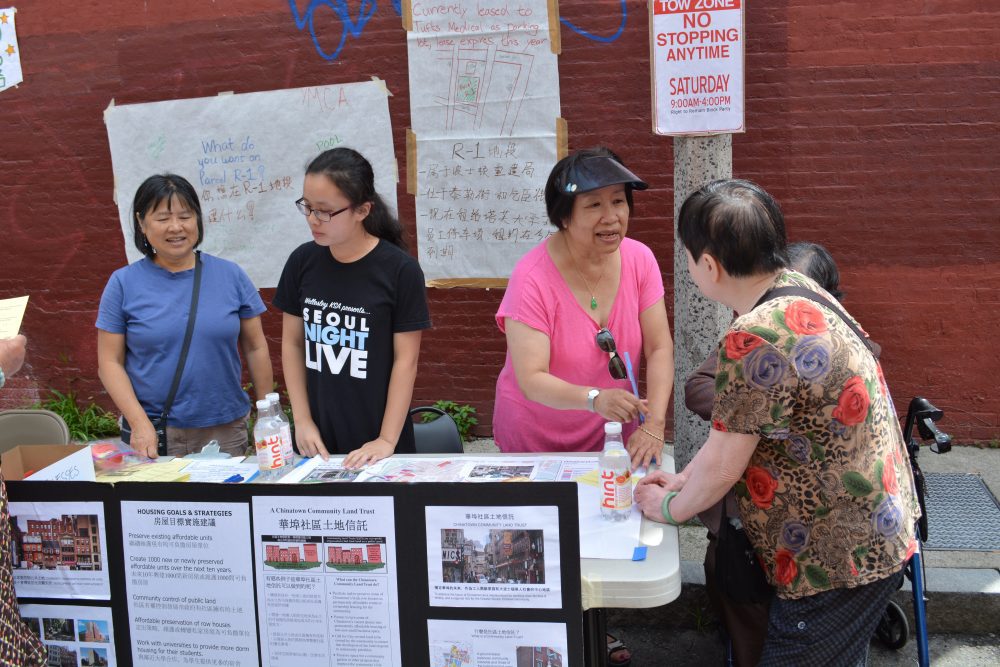
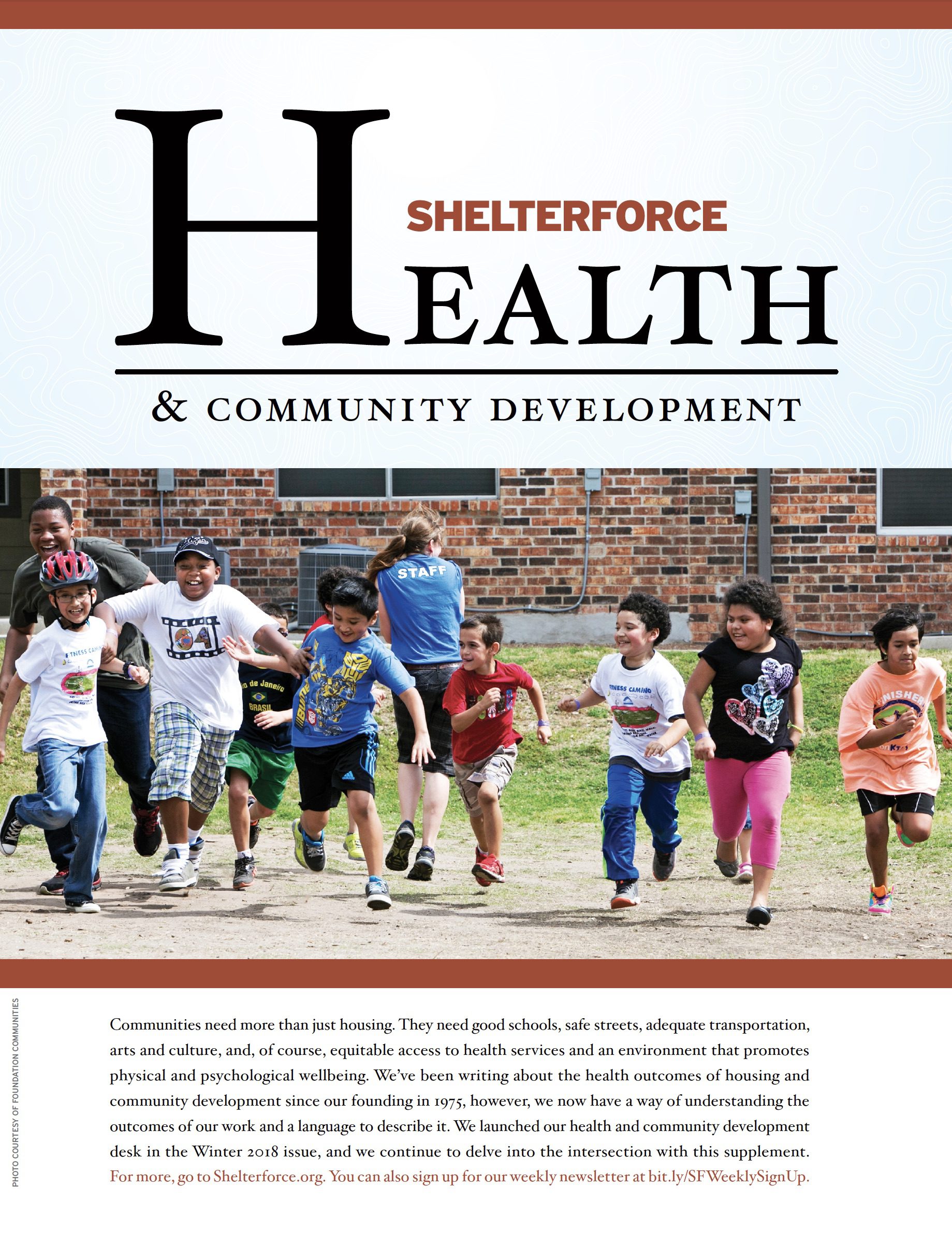
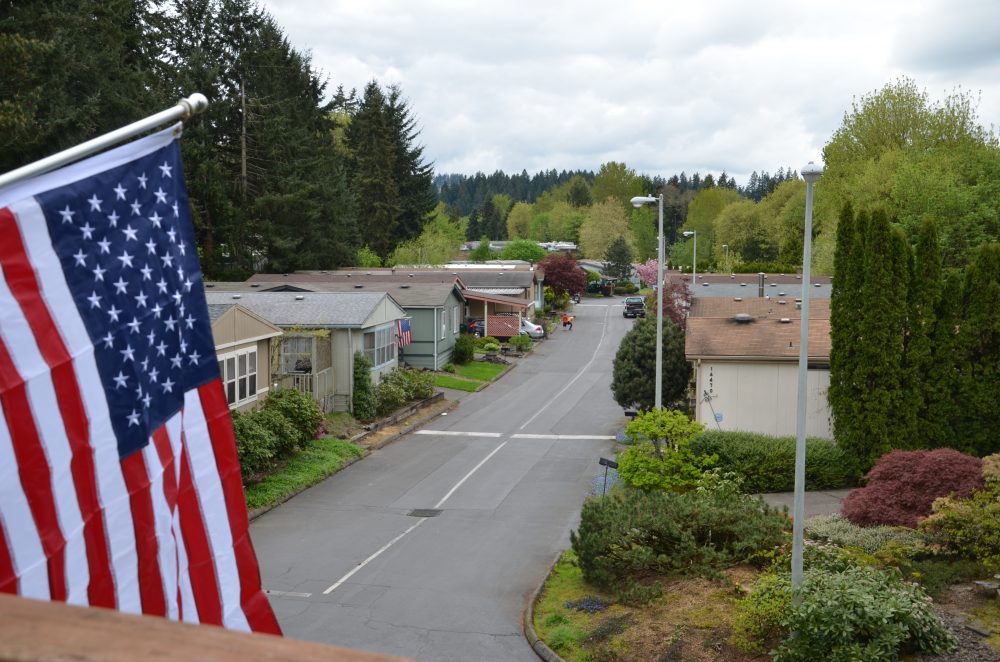
Great piece. But the Build Health Challenge grant is NOT federal (only that it were). The funding comes through a funding collaborative among several national and regional foundations. check it out: buildhealthchallenge.org.